In most modern monitors, the picture quality has been improved, but this does not mean that every model has become suitable for professional work. Some lack quality factory calibration, others lack bracket adjustments, and still others simply don’t fit. The ASUS ProArt line takes into account all the nuances, I propose to understand them using an example ProArt Display PA329CV.
Appearance and stand
Whichever way you look at the monitor, the design is neutral – universal. The case is assembled exclusively from non-staining plastic, decorated with different textures. I liked the ribbed heel design. The monitor fits equally well in any environment, although its primary purpose is focused on professional work.
Not without branded concentric circles – they decorate the upper part of the leg.
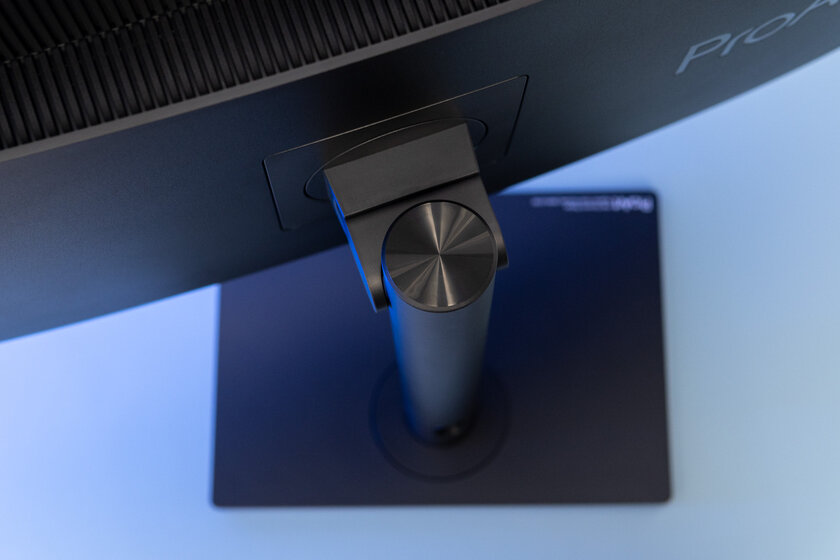
Fasteners are extremely versatile. If you do not take into account the complete fasteners, the display can be hung on the wall using a standard VESA 100×100 mount. Secondly, the monitor can simply be placed on a table on a large stand. It takes up a lot of space, since a flat matte surface can be used in everyday life. For example, put some things on it – I put a wireless speaker. The leg is adjustable in three planes. The range in height is 135 millimeters, in the angle of inclination – from -5 to 23 degrees, and around its axis by 30 degrees in each direction. The same stand supports 90-degree screen rotation to portrait mode.
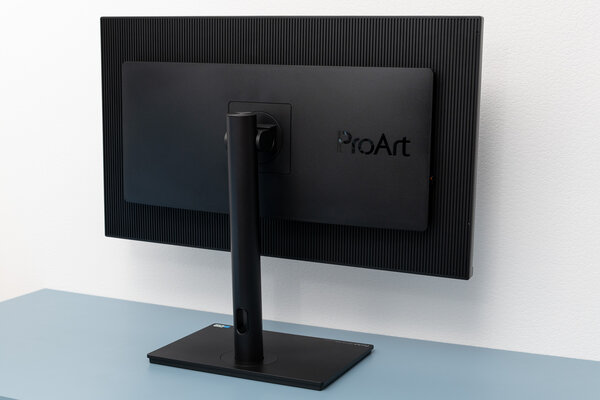
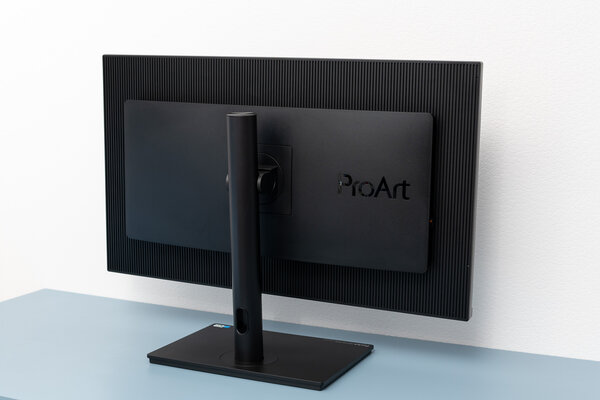
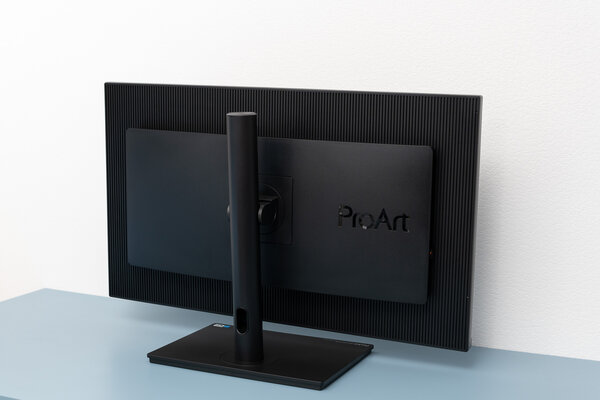
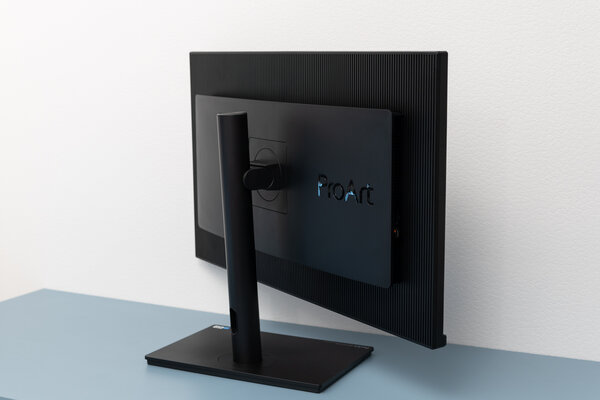
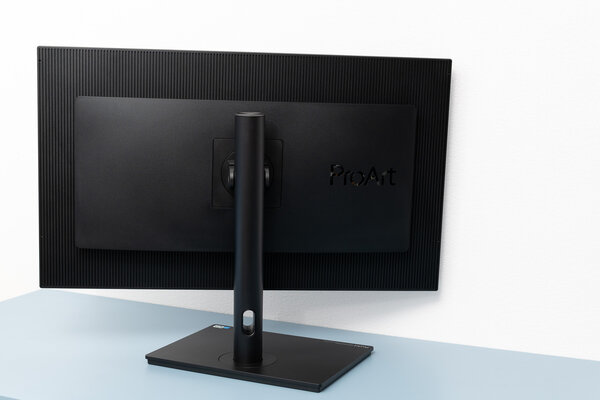
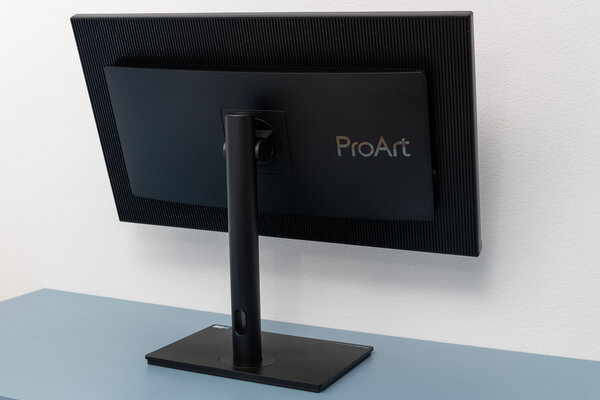
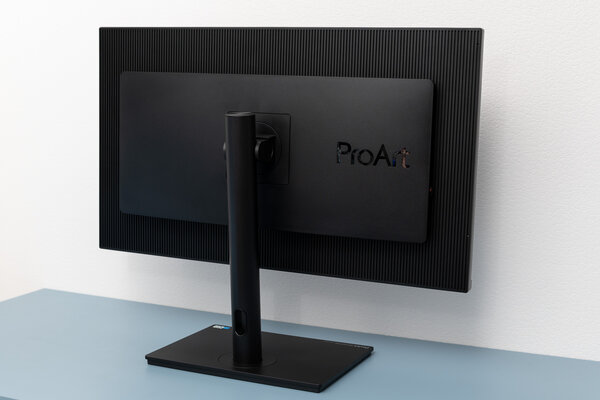
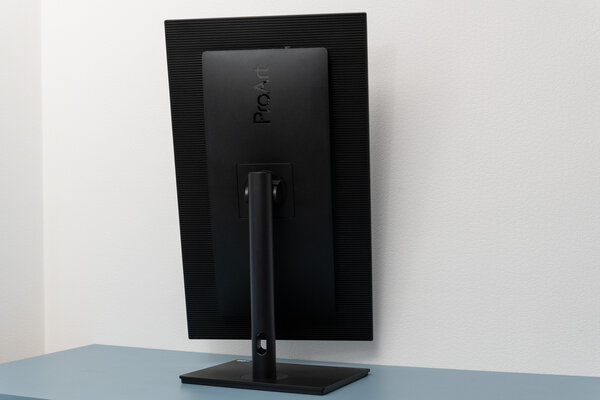
Thirdly, the classic stand can be replaced with a compact clamp for the end of the table. It doesn’t take up any desk space and retains all adjustments, including the 90 degree Pivot.

The clamp is made of thick metal and is equipped with a simple clamp, the place where the table touches is lined with a thick rubber pad. Pay attention to the screws and additional holes, this trick allows you to mount the clamp on tables of very different thicknesses.

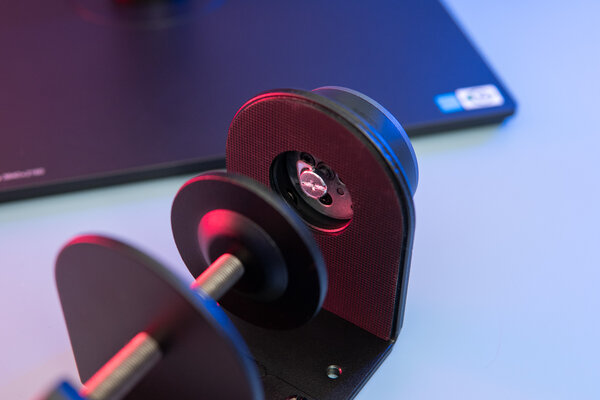
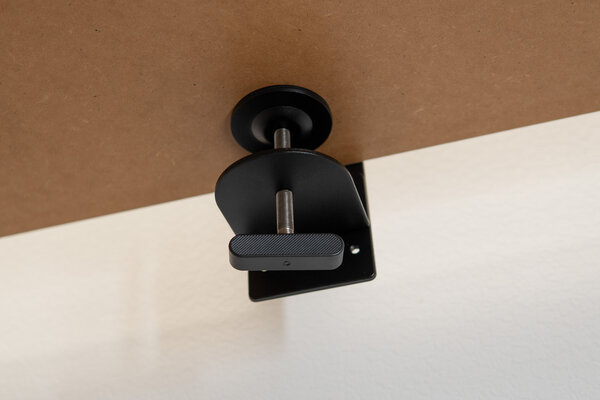
Display and sound
At the heart of a professional monitor, the corresponding matrix is a 32-inch IPS with 4K resolution (3840 × 2160 pixels) and a refresh rate of 60 Hz with Adaptive Sync support. HDR10 supported, no backlight flicker (Flicker-free). A diagonal of 32 inches with a standard aspect ratio of 16:9, I personally consider it the most convenient for my tasks. My personal monitor is exactly like that, and there are no plans to replace it, although I have something to compare with. My tasks include processing photos, and in this case they don’t even have to be scaled to edit small details. The web and Word are also comfortable due to the detail of the 4K image. Engineering matters are also solved conveniently: modeling, simple drawing or mathematical calculations – a large diagonal gives convenience.
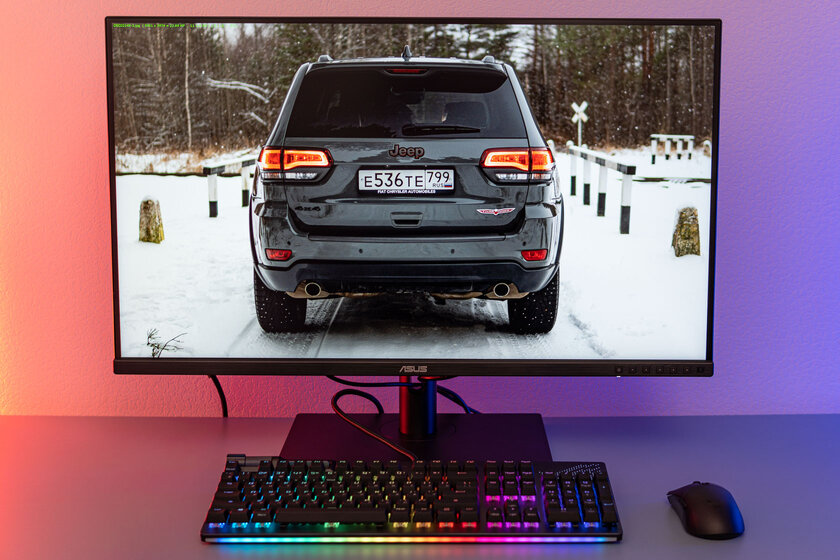
ProArt chip in fine image settings. There are 10 presets in the menu: three of them are adjusted to different color spaces and two more are fully customizable. Contrast, saturation, color mode, gamma – these are not all available settings, the degree of customization is maximum.
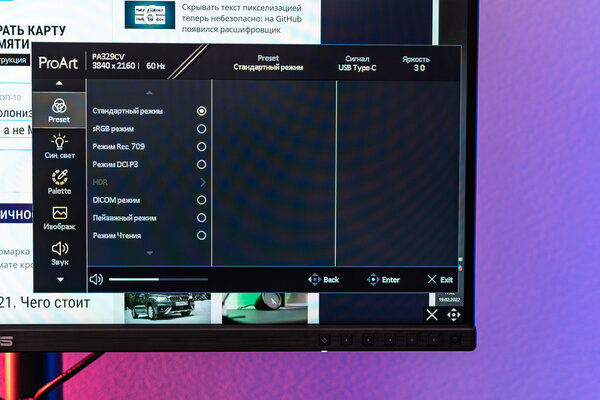
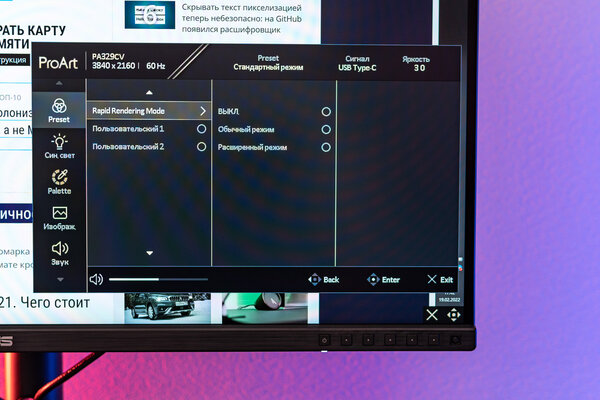

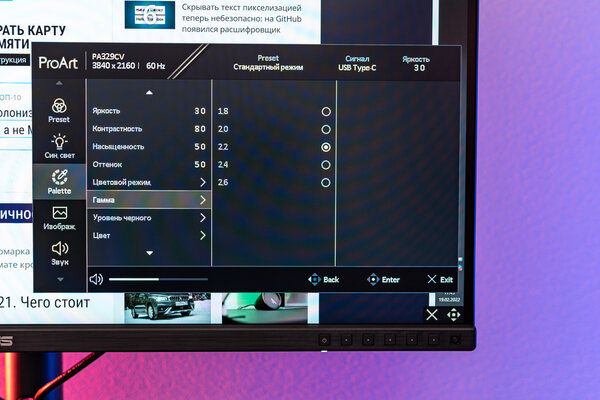
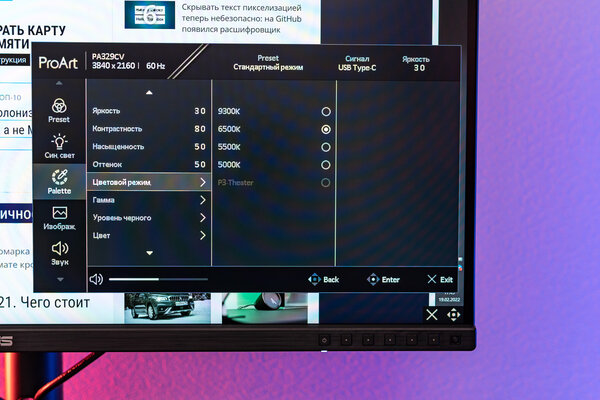

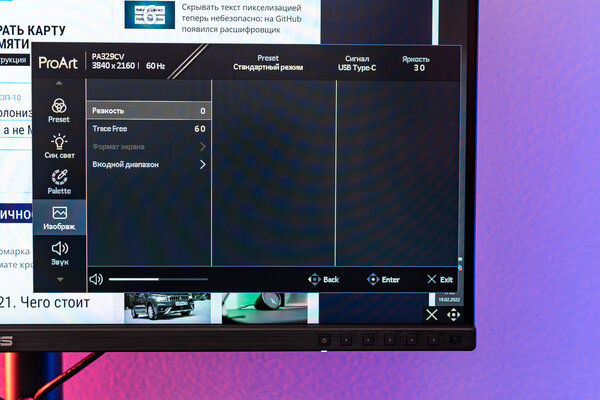

For the matrix, full coverage of sRGB and Rec color spaces is declared. 709, measurements confirm this. And there was a mistake with the factory calibration. By eye, the screen is perfect in terms of gamma and color temperature, but the declared deviation △E of no more than 2 units does not correspond to reality. My monitor at best shows a deviation of 4 units in one of the shades. The result is achieved in the standard display mode, other presets do not shine with accuracy, at least according to the standards of the Spyeder4Elite colorimeter.
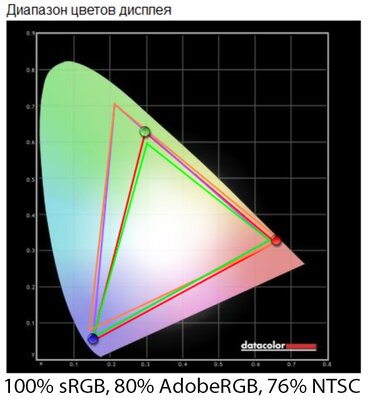
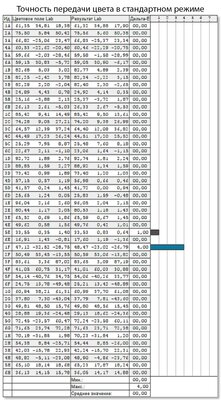
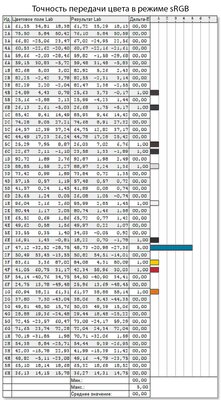
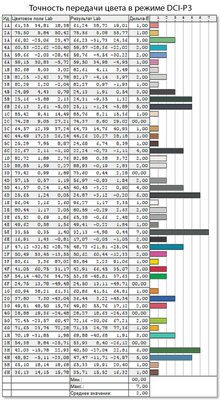
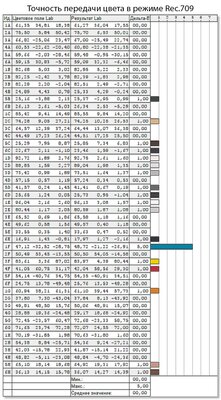
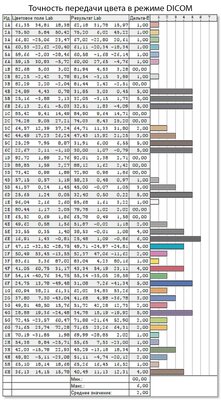
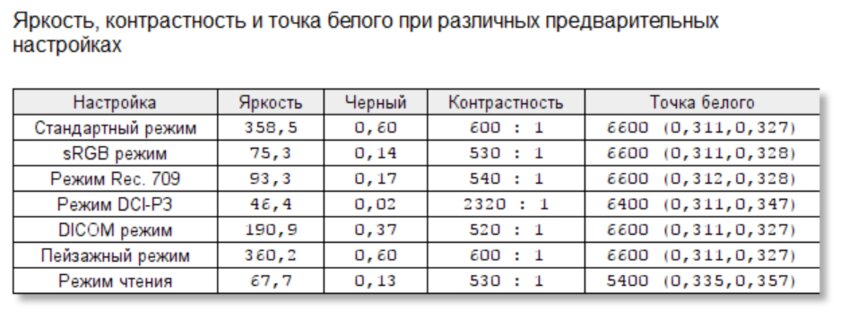
Standard and other customizable modes allow you to adjust the color temperature in Kelvin (5000K, 5500K, 6500K and 9300K), as well as choose from 5 gamma options from 1.8 to 2.6. By the way, each gamma curve corresponds exactly to its standard.
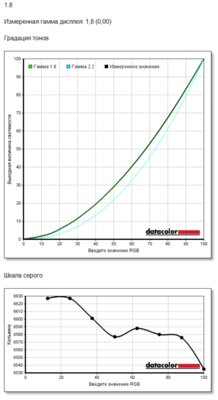
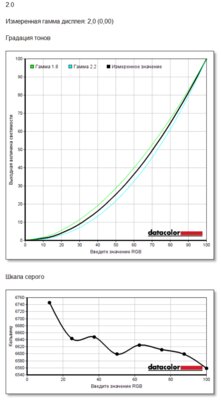
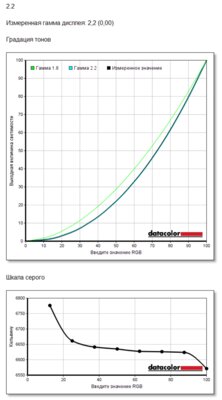
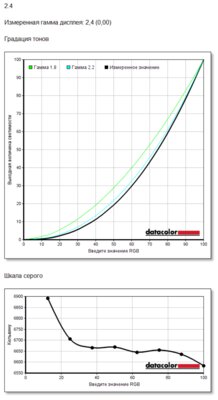
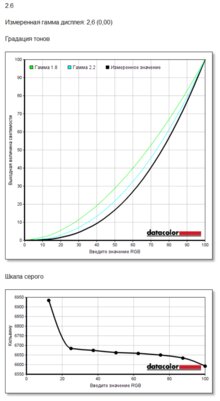
The maximum declared brightness under normal conditions is 350 cd / m², and the actual values \u200b\u200bare even slightly higher – 359.4 cd / m². In HDR mode, the monitor accelerates to 400 cd/m². Both values are enough for stationary operation in a well-lit room. The minimum 34.6 cd/m² is quite comfortable. Although I didn’t lower the brightness so low during all the time I used it, usually 10-30% was enough.

Separately, I note 5 levels of reducing the intensity of the blue glow, which will come in handy in the evening after a day spent in front of the computer.
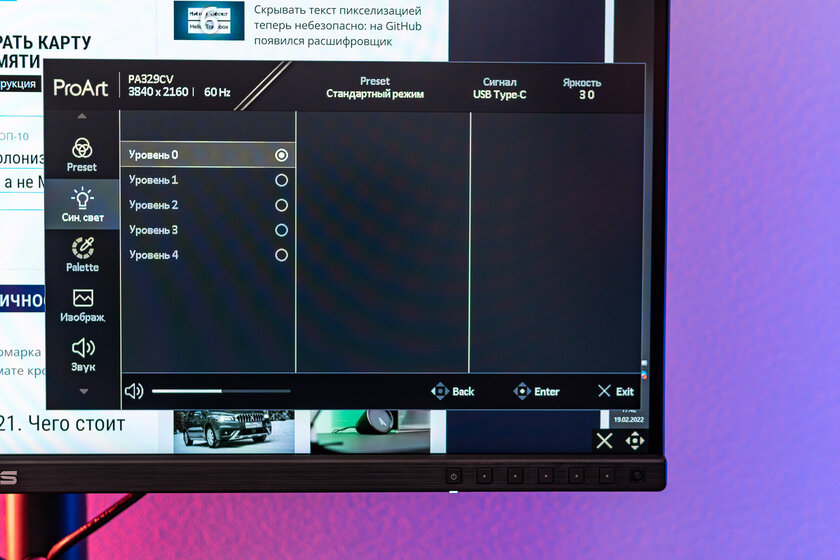
The screen failed uniformity of brightness, discrepancies at full brightness exceed 23%. Uneven backlighting with characteristic whitish highlights is common for IPS matrices, especially with large diagonals. I also note the Glow effect, which consists in a greenish-purple gradient around the edges, if you look at the black background at an angle.


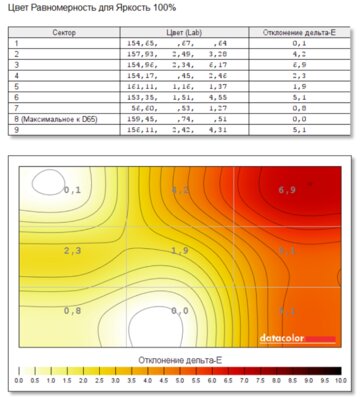
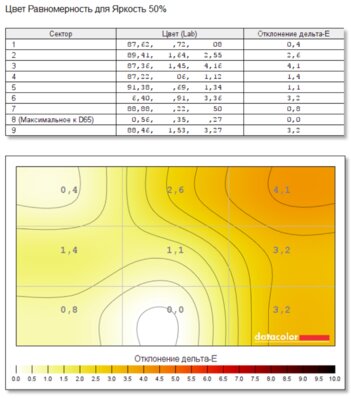
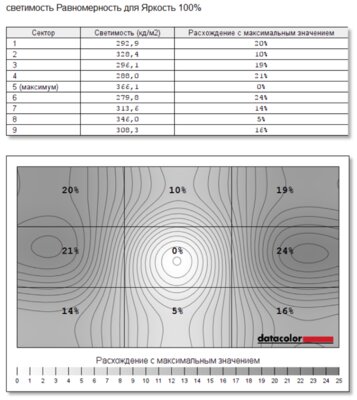
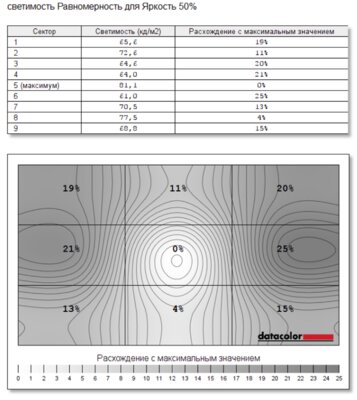
The framing is done in a modern way: on three of the four sides, the matrix is \u200b\u200binstalled flush with the body, and at the bottom there is a protruding plastic frame. But the thickness is not a record, you can not call ASUS ProArt Display PA329CV frameless. But the coating is semi-matte, that is, it does not glare at the same time and does without unpleasant graininess.

The final 4.5 points on the DataColor scale is fully deserved.
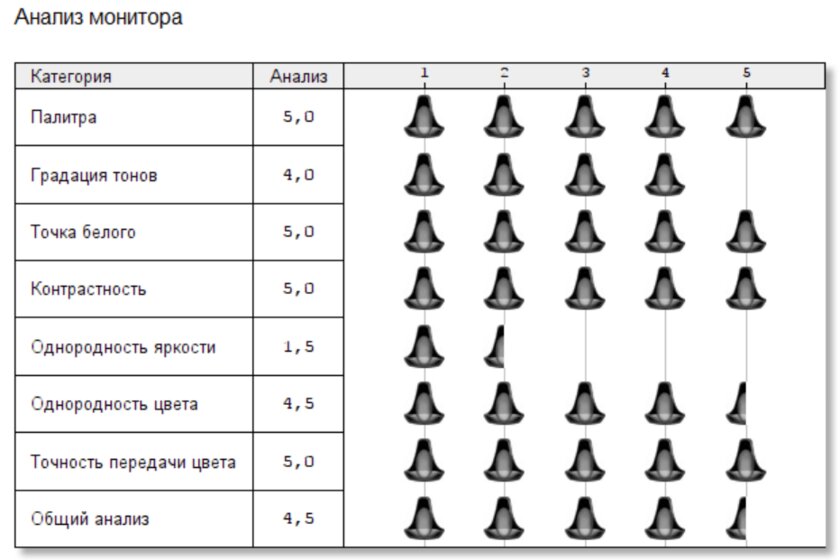
Stereo speakers with a power of 2 W each are rather nominal, they are outplayed by any more or less good laptop. In other words, they should only be used for lack of a better one.
Menu and controls
The joystick and six mechanical buttons are located directly on the front panel. It can be said that this is old-fashioned, although in fact it is one of the most convenient options for placing controls. Four of the six keys provide quick access to important options. Two shortcuts are customizable.
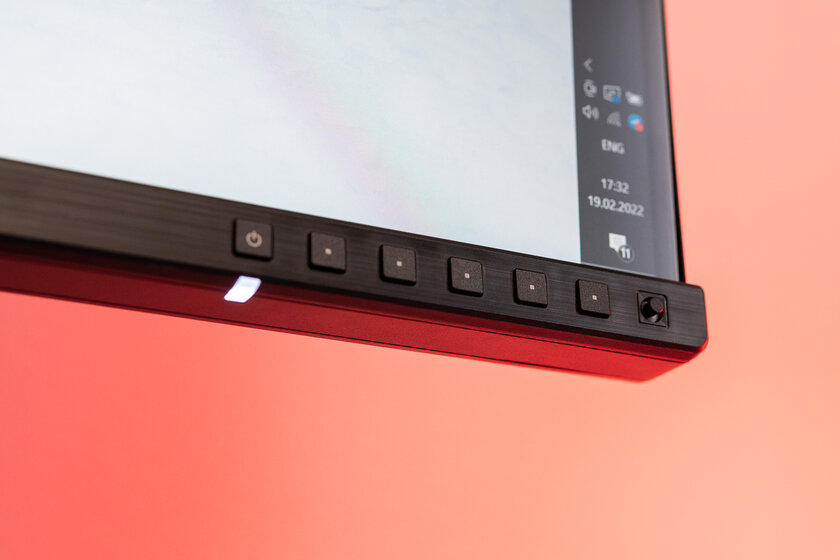
This is an important point, since the main menu is replete with secondary settings – almost every little thing is regulated. For example, you can turn off the indicator that glows white when the monitor is on. Despite this, it is convenient to navigate, the breakdown into categories is quite reasonable. Russification is generally correct, but there is an undertranslation.
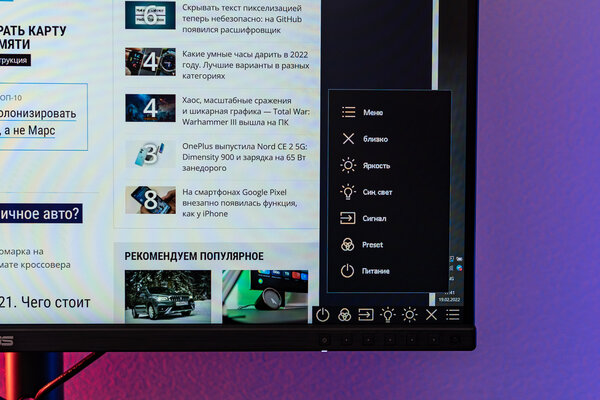
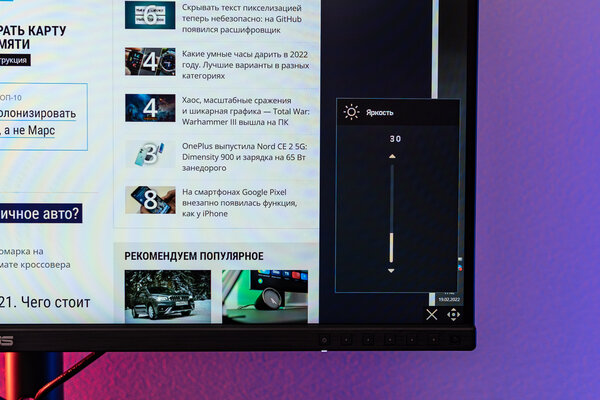
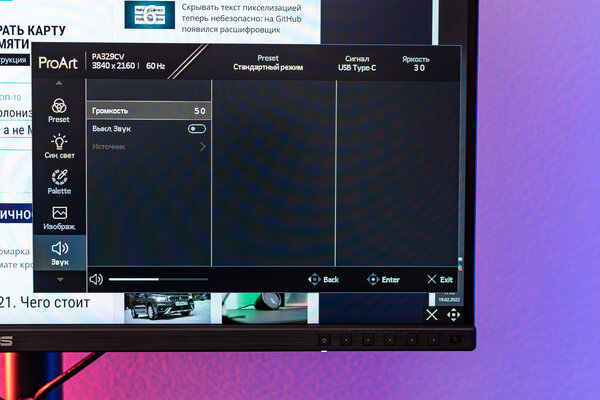
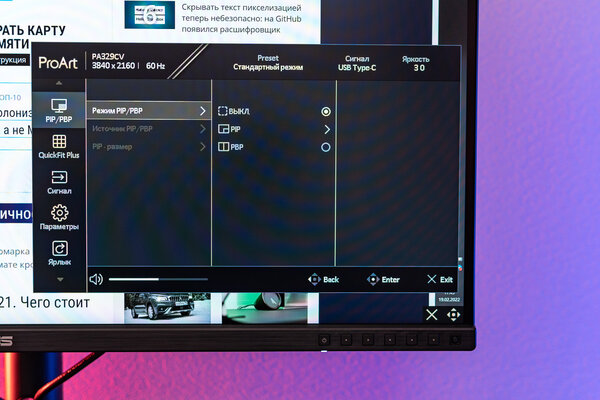
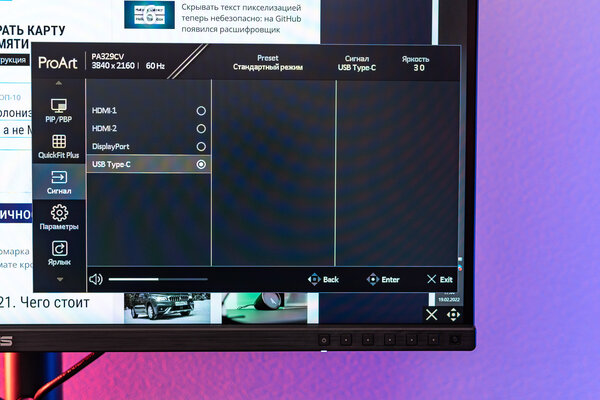
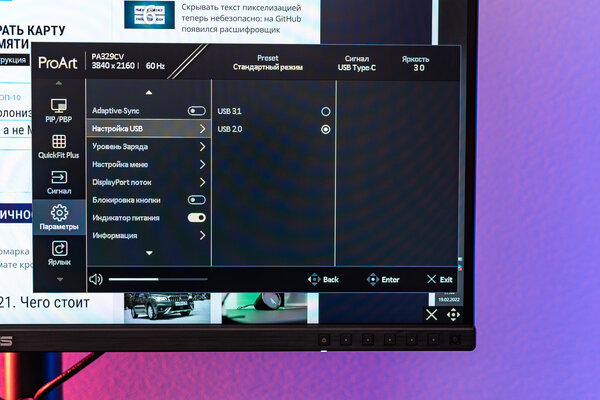
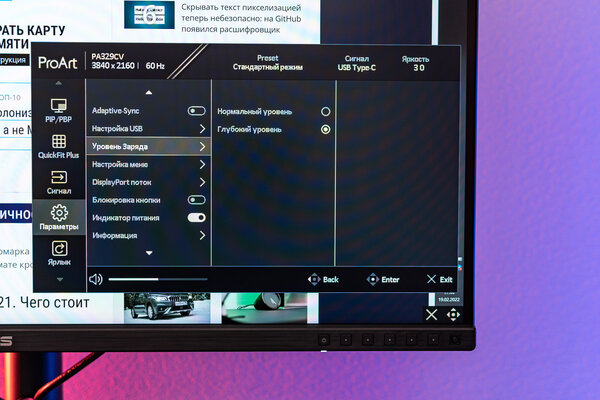
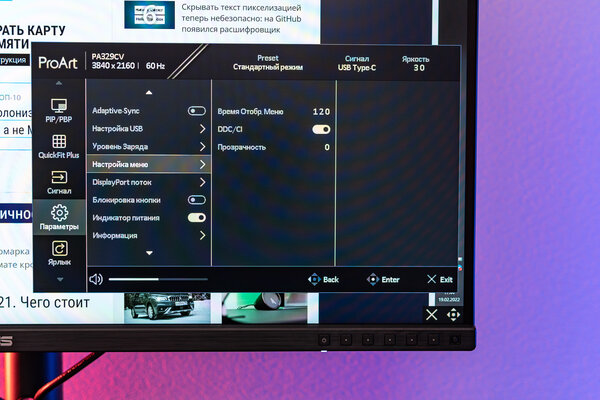
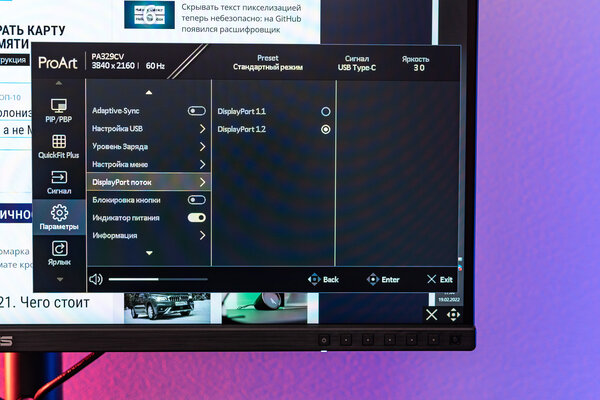
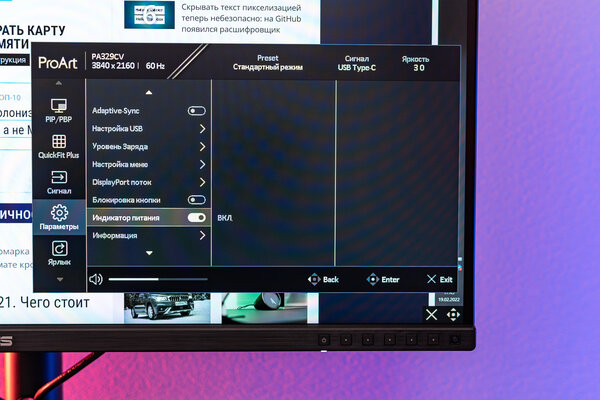
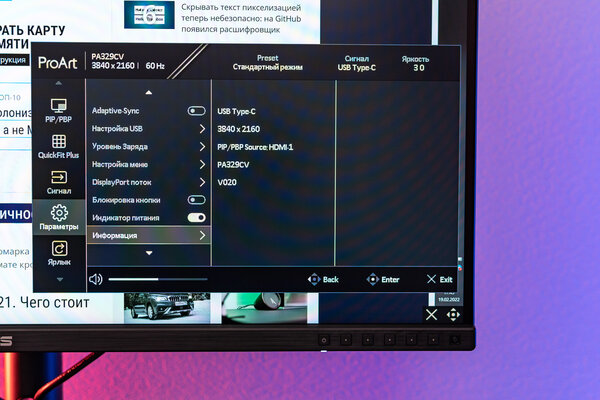
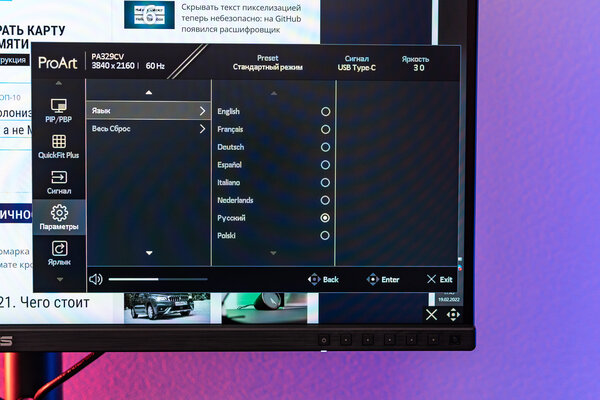
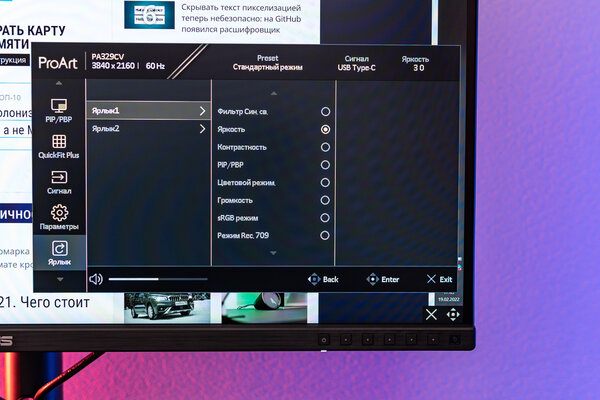
Not without a specific function for professionals – QuickFit. With its help, you can display a grid for working with illustrations and photographs.
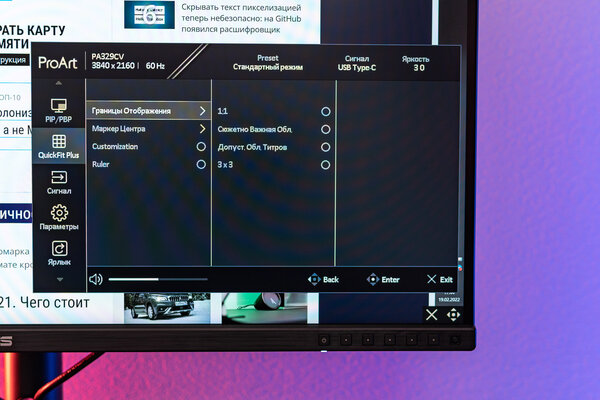
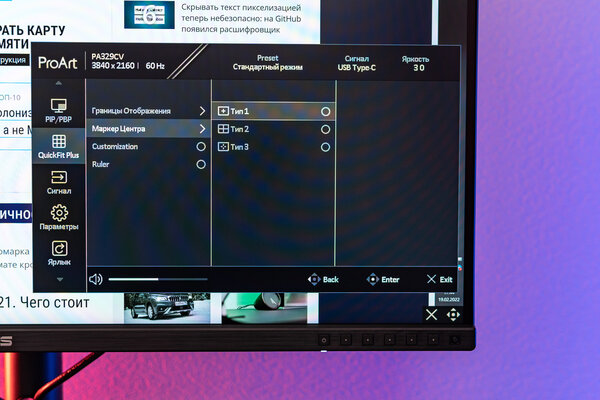
Connectors and power
Two HDMI 2.0, DisplayPort 1.2 and USB-C with Power Delivery support. DisplayPort and USB-C cables included. Our hero supports all modern interfaces with the ability to display two sources simultaneously in picture-in-picture (PIP) and side by side (PBP) modes. Pay attention to USB-C, from which you can also recharge laptops at up to 90 watts.
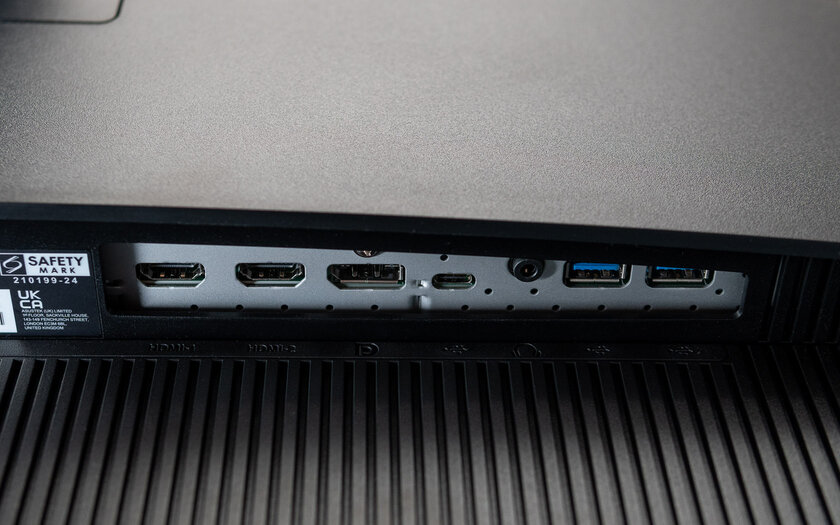
The same symmetrical connector is used to forward the hub, consisting of 4 full-sized USB 3.0. Two of them are easily accessible on the left side, and two more are located at the bottom next to the other ports.
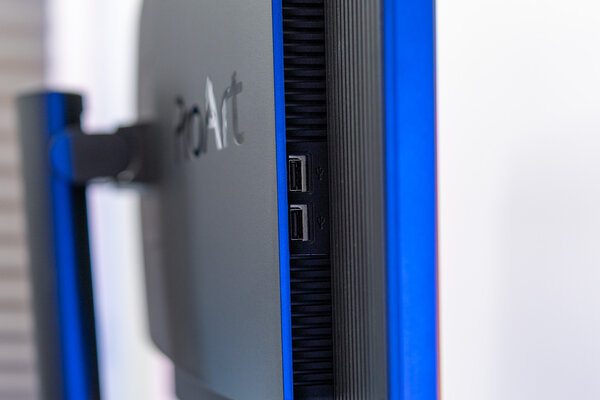
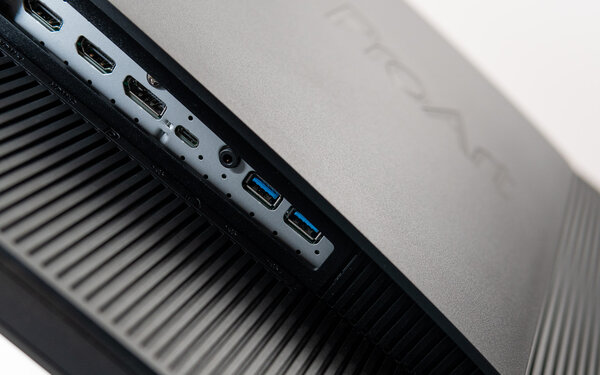
A powerful power supply is required to power the huge bright screen and external devices via Power Delivery. In this case, it is built into the monitor case and requires a standard three-wire wire to supply power.
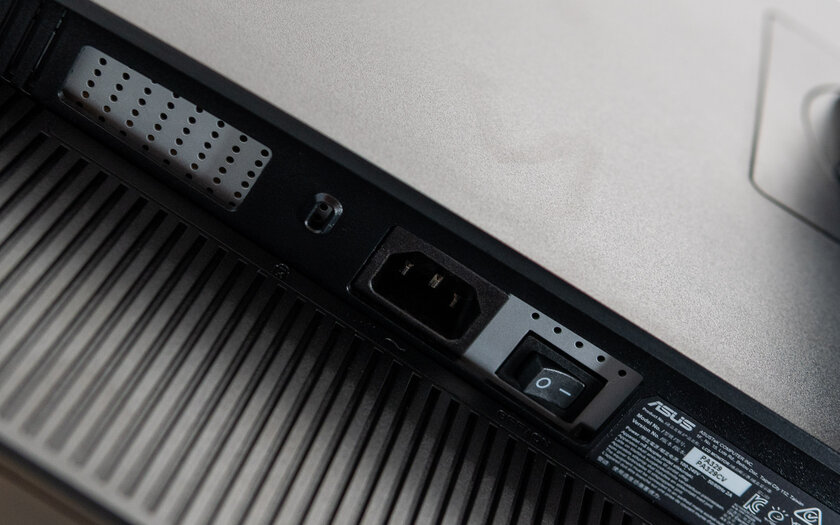
The leg has a window for laying all the necessary cables.
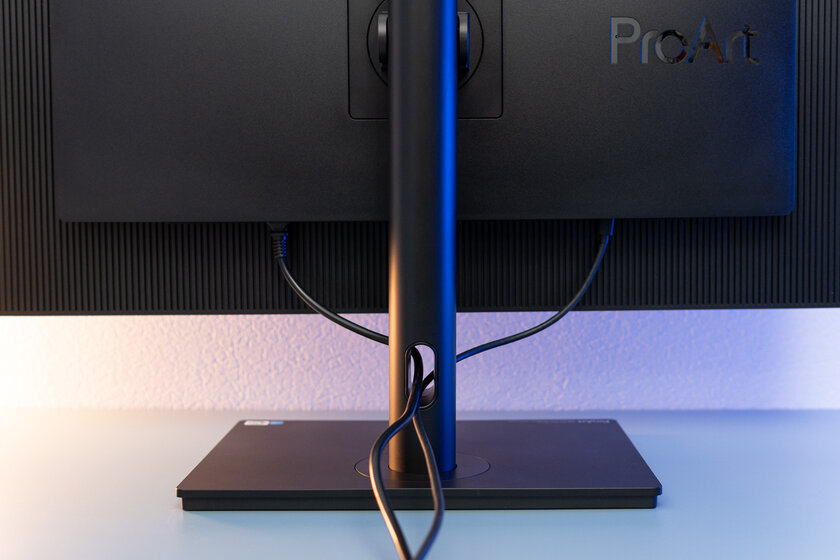
Review after two weeks of use
In some reviews, I say this phrase – I want to keep the tested thing for myself for permanent use. So here it is ASUS ProArt Display PA329CV belongs to this category. The new product fully corresponds to my ideas about the ideal monitor and does an excellent job with my daily tasks. If you do not take into account a really high-quality matrix with a successful semi-matte finish, I liked the fastening to the end of the table, which occupies a minimum of space.
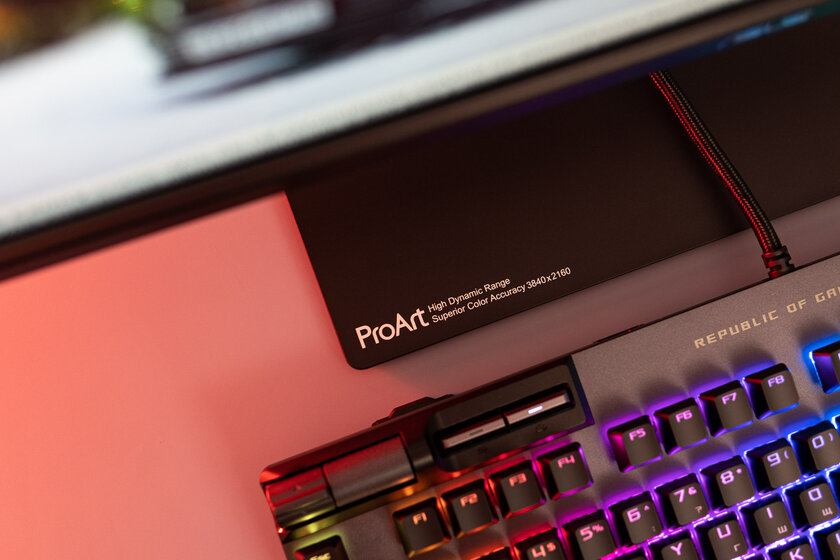
I also really liked the USB-C connection with Power Delivery support. Now it is enough to connect one thin wire to my laptop, through which the picture, power, and data for USB peripherals will go. Indeed, four full-sized USB third version is enough to connect all the peripherals.
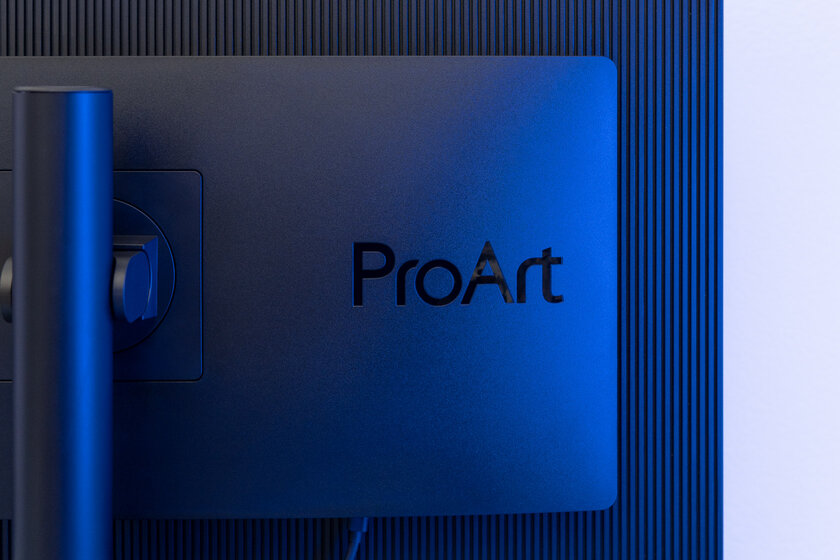
Pros:
- large 32-inch diagonal with 4K resolution;
- many subtle settings in the menu;
- convenient control of the joystick and buttons;
- reliable bracket with adjustments in three planes;
- vertical Pivot mode;
- and a regular stand, and fasteners to the edge of the table included;
- USB-C with PD support up to 90W.
Minuses:
- the accuracy of the factory calibration does not correspond to the declared values.
May not like:
- the side frames are thin, but the screen is far from frameless;
- built-in power supply.
Source: Trash Box
Donald-43Westbrook, a distinguished contributor at worldstockmarket, is celebrated for his exceptional prowess in article writing. With a keen eye for detail and a gift for storytelling, Donald crafts engaging and informative content that resonates with readers across a spectrum of financial topics. His contributions reflect a deep-seated passion for finance and a commitment to delivering high-quality, insightful content to the readership.







